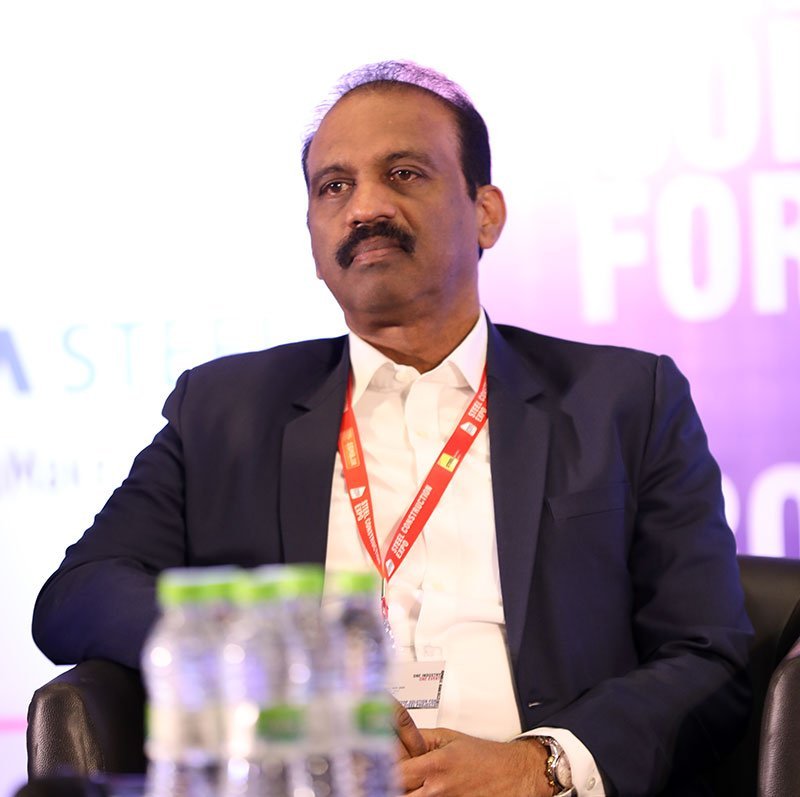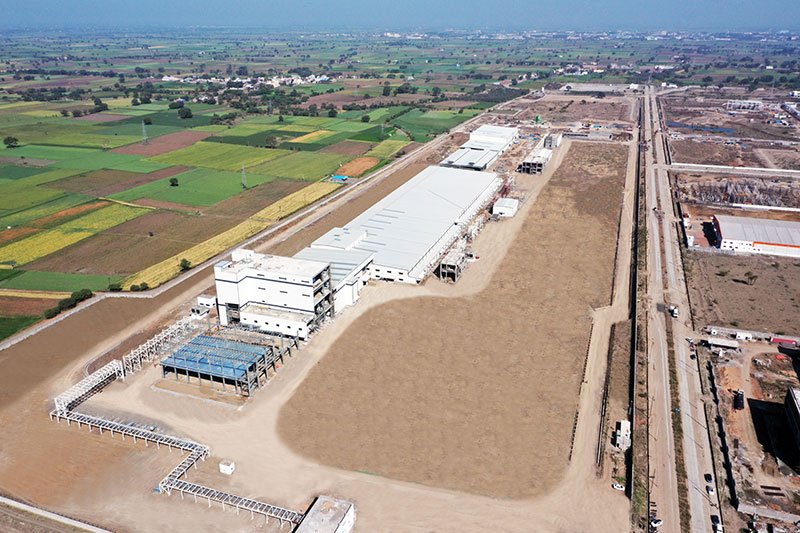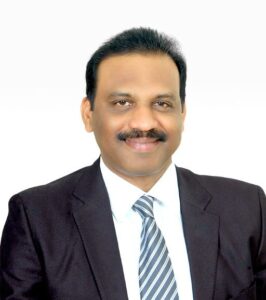He has decades of experience under his belt… he is calm, he is level headed… & is now part of India’s top PEB company with his extensive knowledge & immense presence…
Here’s P.V. Mohan, Country CEO, Kirby Building Systems & Structures India Pvt. Ltd., sharing his wisdom with us.

Kirby is one of the biggest players in not just in the Indian steel fabrication industry but globally as well, especially in the Middle East. What is the major difference that you will see between India and Middle East when comes to construction with steel?
Kirby is a multinational company and a pioneer in Pre-Engineered steel buildings (PEB) technology. We are amongst the top five PEB players globally. Our parent company Alghanim Industries brought the technology of PEB buildings in 1976 to Kuwait and we have been the dominant player ever since in all the regions we operate. We have two plants in Middle East from which we service the entire region of Middle East and African continent. We have two plants in India catering to the total Indian sub-continent and another plant in Ho Chi Minh City, Vietnam, from where we service the total Southeast Asian market. We have a global presence and successfully executed projects in more than 70 countries.
The basic technology of PEB is similar in all regions; however, the engineering design codes, wind speed requirements, terrain and usage of some raw materials are different based on the regional requirements.
To be specific, one of the important aspects which differ in Middle East as compared to India is that we in India directly deal with the end consumer or end customers. Erection of steel structures and site activities are part of our scope in India. The building handover after steel structure erection at site is also in the scope of Kirby India. However, in middle east and other parts of the world erection is not in our scope and normally contractors do the erection activities at sites.
Another major difference is that Middle East does not have high intensity of rainfall as compared to India. Given the intense monsoons India faces, there are certain design modifications that are needed, especially the roof profiles, openings on the top or skylights engineering and other similar details, to ensure that there are no leakages. One more aspect is that in the Middle East sandwich panels usage is high due to high ambient temperatures and due to statutory requirements. Apart from these differences, and some slight region-specific modifications, the PEB technology for both the regions is mostly similar.
Kirby has been a part of multi mega steel construction projects, both in the public as well as the private sector. What are the major differences that stand out when it comes to working in these two sectors?
Kirby has executed many projects both in the public and private sectors and we are executing projects from very small of almost like 30 thousand sq. ft. to 30 lakhs sq. ft. There are a few key differences in these two sectors. It begins right from the tendering process, types of contracts, types of building applications, commercial terms, the decision-making process, and the project monitoring mechanisms. One of the important aspects is speed of dispute resolution. Another important aspects while considering a government project is that of cash flow management, which is one of the very key requirements for our business. Private sector has a much wider range of industrial applications as compared to public sector companies and other government agencies.
According to you, what are the primary concerns of construction with steel and how can the Indian Steel construction Industry as a whole addresses it?
Construction with steel has many advantages however there are few challenges. The key challenge in steel construction is managing high volatility of steel prices which eventually may lead to increase in the construction cost. Very high price prices may impact customer budgets and their ROI of projects.
Lack of correct/standard erection methodology and safety practices that are required to be follow at sites is one of the challenges. With mushrooming of many small PEB players this is very important as failure of one building impact the industry as a whole. Customers can overcome this challenge by having due diligence, visiting fabricator plants to analyze the quality systems, safety procedures, process & systems so that a good vendor is selected who have good experience/ good track record.
High rise buildings application is a new vertical and steel fabricators/PEB players are making good inroads in this segment challenging the traditional construction with cement. With lower cost of fireproof paints, this segment has good potential to grow. Few steel companies are in the process of launching new fireproof steel the same need to be assessed in next few years on the economic viability.
The other key thing which we noticed in the last few years is shortage of skilled people and required amount of workmen at sites. Skilled workmen are available in only some parts of the country.
Construction with steel is yet to penetrate in many areas of the country while traditional construction using cement continues to dominate. As the penetration is very low there is huge scope of steel construction in future. The good news is that the mindset is slowly changing about steel buildings and hence sees a good opportunity in next few years. Steel construction has already made an impact on new segments like airports, sea ports, metro stations, complex factory building, large warehouses, cold rooms, data centers etc.
Steel being one of the most important engineering and construction material is one of the core pillars of today’s society; so the industry as a whole should come together to work on the shortfalls. The price volatility to some extent can be controlled by having a very good relationship with steel mills and by having a quarterly or half yearly price agreement. This way, the volatility can be addressed and the margin erosions can be controlled to some extent.
When it comes to the availability of skilled manpower, the industry as well as the government needs to provide focused training. The government can incentivize to train people and encourage getting themselves skilled. Education on steel construction can begin right in the colleges where forums on steel construction across colleges could help educating people. Designing a curriculum in engineering / diploma courses in steel construction along with methodology and technology can greatly impact.
If Government of India support and prioritize to use only steel construction/steel buildings than the steel construction industry will grow abundantly thus improve consumption of steel in India.

As far as the growth in the construction industry is concerned, according to you, which are the primary sectors that will turn the tables for India and what role can the fabrication sector play in the said growth?
The Indian economy is expected to grow between 7 to 7.5 per cent as per different sources, which makes us world’s fastest growing economy. The construction industry is expected to register a very high growth which is going to drive the manufacturing sectors which in turn will lead to increased demand for steel buildings. Thus steel fabrication/PEB industry will play a major role in the growth of the Indian economy.
Some of the key growth segments for PEB are warehousing, 3PL, logistic parks and e-commerce segment. Automobile industry is also poised for a good growth. It’s not only the main automobile manufacturers but also the key components of automobiles like tyre industry, electrical component, electronic industry and the new growing industry of EVs batteries/EV components which are the future of automobiles. There are a lot of other industries which are coming up with huge growth plans, even though they are at a nascent stage. The renewable energy, the solar industry, mobile, semiconductor, pharmaceuticals, textile, engineering, etc. will add to the growth of the PEB segment.
The government has recently launched the PLI scheme for different segments where there is a US $2 billion incentives announced. This is phenomenal and it will drive the overall economy. I am sure that there is a huge growth potential in India over the next few years.
What are the biggest challenges you have faced in India as a steel fabricator and what, according to you, is the best Indian project of Kirby so far?
We continue to face many challenges despite of our existence in India for more than two decades. However, with our global experience and highly knowledgeable talent pool in Kirby we are able to successfully manage and grow our business. As mentioned before, some of the major challenges we face are the fluctuating raw material prices, availability of trained manpower/ skilled labor at sites. Covid times were a real testing time for us as we experienced shortage of workmen at sites. We had flown workers through air, transported through special buses to meet customer requirements. Inspite of all challenges we successfully implemented COVID protocol at all sites and ensured no major COVID outbreak at any of our sites.
On a macro level we are observing low interest in youth to skill themselves in new technologies in construction. The present youth prefer IT /computer industry due to attractive packages and working conditions as compared to construction industry. Recently, we are witnessing the youth not showing keenness to join Civil engineering and understand many colleges are now closing this vertical in engineering stream. This is an alarming situation that needs to be corrected urgently, especially in the current situation where PEB is gaining a phenomenal acceptance in the market and growing in a big way.
As for Kirby’s projects in India are concerned, we have done a lot of projects across the country which are unique in their own way. We give equal weightage to all projects whether they are small or large in nature. So, I cannot single out one project because for us, every project is equally important, significant and very prestigious.

As the Country CEO of Kirby, what are your plans for the next five years?
Kirby India is on a growth trajectory and have been growing consistently for last few years. Our plants are running at optimum capacity. We are setting up our third factory in Halol, Gujarat and it will commence operation from January 2023. This will take our total capacity to more than 250,000 tons. By having the third plant in Halol, Gujarat, we will be in a better position to serve our customers in west.
As I mentioned earlier, PEB industry is expected to grow in the coming years because of various reforms announced by the Government of India, especially the PLI Scheme which is mainly oriented towards attracting companies to set up manufacturing facilities. I am sure that we are well poised for the next five years to be leading the PEB industry as a market leader and creating new benchmarks. We definitely look at the next five years as high potential for growth.
What message or advice would you like to give to the new generation of industry professionals?
Firstly, I would like to tell the new generation of professionals that the steel construction industry is a very promising industry with high growth potential. There is a lot of potential in embracing new technological advancements that are taking place in the engineering, project management and construction management. With the new upcoming technological changes, I think the new generation is capable of embracing them and of course should always strive to be innovative and think out of the box for reducing cost, improving quality and delivering value to our customers.
In fact, today we see more usage of latest software’s for design & detailing, usage of artificial intelligence (AI), virtual reality (VR), and other new emerging technology of 3D printing, robotics and creating holographic to provide a very good customer experiences and the usage of drone technology for site management. All these will play a very important role in the future of the Construction Industry. So, I definitely feel that there is a huge possibility for the new age professionals. As the new age professionals are having good exposure of global technological advancements, they have a vast space in construction industry to innovate with new zeal and new enthusiasm. I’m sure that a lot can be changed, and they can make a phenomenal difference in the construction industry.
What is your mantra for success?
Our industry is a combination of manufacturing and contracting. Some of the key success factors are customer relationship management, effective and proactive communication, good project management, delivering consistent high-quality products, high customer focus and more importantly cash flow management.
One other important aspect is that we need to grow continuously; if you do not grow, you perish. Winning an order is not the only important thing. Executing the project on time, with good quality and economic viable timely commercial closure is very important. Our mantra for success in one sentence would be “Passion for Growth and Innovate to Differentiate”.





